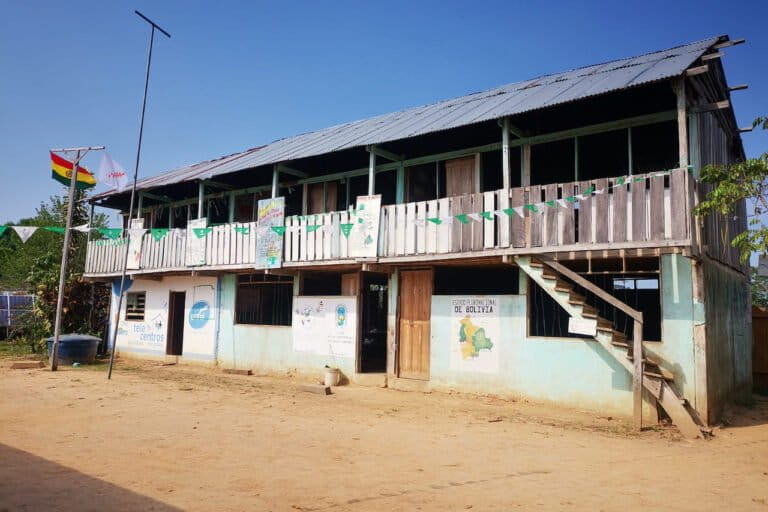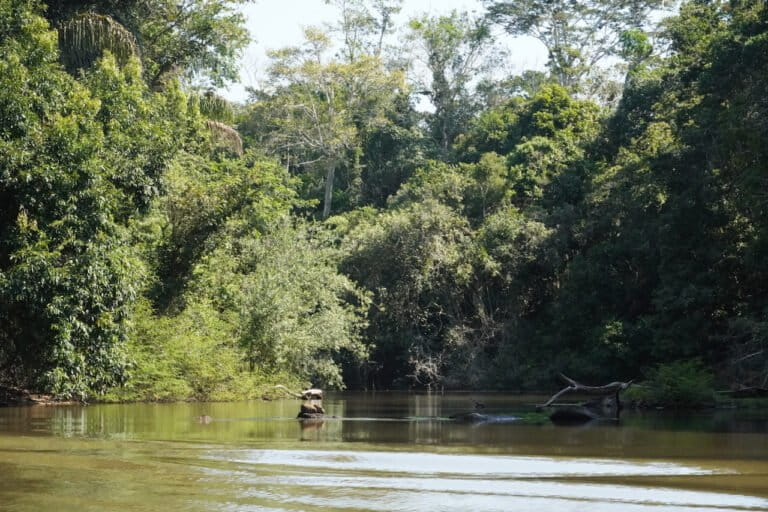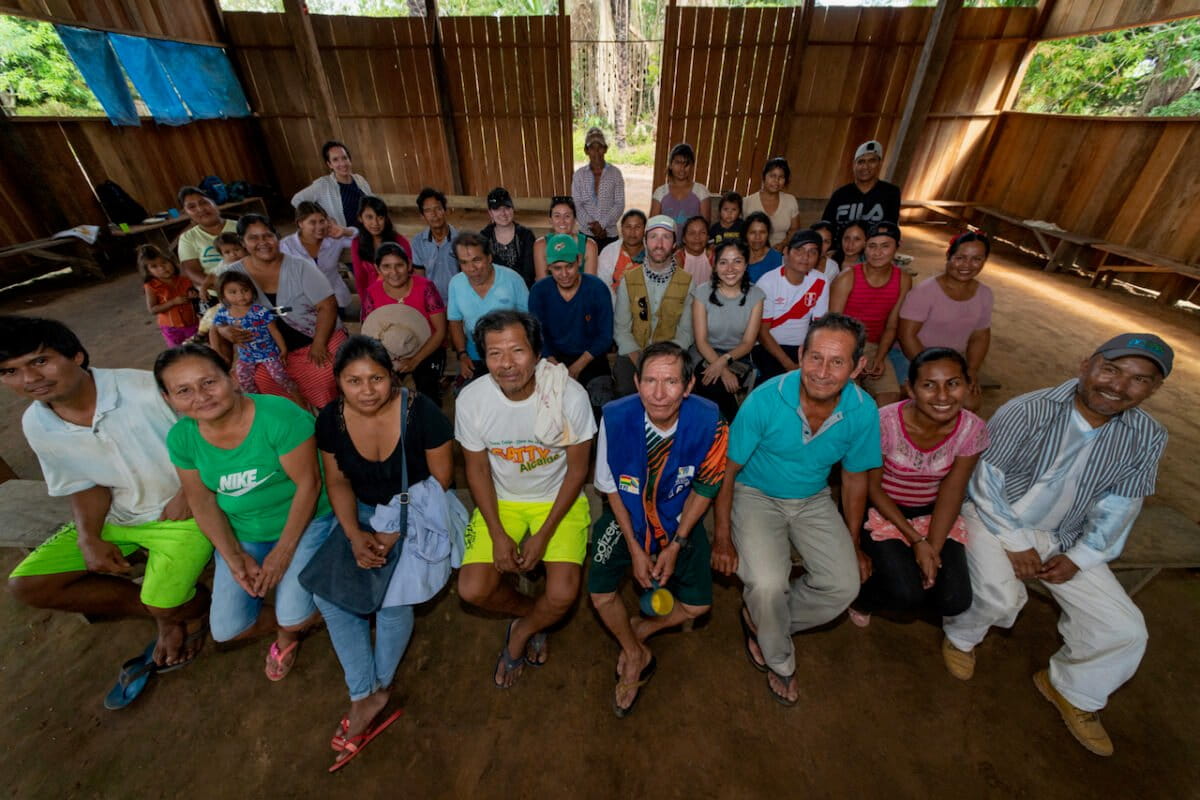- After a process lasting more than two decades, the Bolivian government has granted the Indigenous Tacana II people a formal title to their ancestral territory, encompassing more than 272,000 hectares of land.
- While this recognition grants them full ownership and legal security, leaders and researchers say it is not enough to protect them from the country’s political insecurity, the lack of enforcement of environmental regulations and invasions by illegal actors.
- The Tacana people have reported land encroachments and the illegal opening of roads, which impact the transit zone for uncontacted Indigenous peoples.
- ● Experts on Indigenous Peoples in Isolation and Initial Contact (PIACI) told Mongabay that the title may provide a territorial barrier for the isolated people, but specific territorial protection measures are still required to guarantee their full protection.
After more than 20 years of legal battle, the Tacana II Indigenous people in Bolivia have finally obtained a legal title to their ancestral land, which is a transit zone for uncontacted Indigenous people. While this recognition grants them full legal ownership, Indigenous leaders and researchers told Mongabay security protections aren’t guaranteed due to state political insecurity, the lack of enforcement of environmental regulations and invasions by illegal actors.
“In reality, the title is a legal security of collective ownership of those families that form part of this territory,” Roland Mejía, the president of the Tacana II Río Madre de Dios Indigenous Communities Center (CITRMD), told Mongabay over WhatsApp voice messages. “But the title alone will not defend [the territory]; it must be defended by the actions of the community leaders so that the collective right to this territory is respected.”
The 272,379-hectare (673,000-acre) territory is located north of Madidi National Park and west of the Bajo Madidi Municipal Conservation and Management Area in Abel Iturralde province of the department of La Paz. The land serves as a biological corridor, connecting protected areas critical to the survival of more than 50 vulnerable plant and animal species, including the near-threatened jaguar (Panthera onca). It is also home to four Tacana II communities: Puerto Pérez, Las Mercedes, Toromonas and El Tigre.

The recent decision by the National Institute for Agrarian Reform means that the Tacana II people now have legal rights to the land. It also means they are now able to develop sustainable development projects and manage as they see fit the local natural resources, such as Brazil nuts (Bertholletia excelsa), palms and hardwoods.

“Indigenous peoples and communities generally have few opportunities to advance their titling process, because it involves resources to travel, the need to carry out intermediate procedures, have permanent legal and technical support, and verify the steps completed in the process,” Carlos De Ugarte Ochoa, the director of the Conservation Spaces Program at Conservación Amazónica, told Mongabay over email. For the Tacana II people, the process “was very cumbersome because, at first, the Tacana II representatives were unfamiliar with the current regulations.”
During this time, the process was reversed or dismissed several times. It was finally granted to them July 10. Now, the communities can benefit from legal security as well as access to various state support programs and direct external financing to manage their own development projects.
Lack of protection for isolated people
For decades, the Tacana II people have been threatened by logging companies, gold miners, barraqueros (settlers) and state authorities attempting to invade and exploit their ancestral lands. More recently, in September, the CITRMD filed a complaint with the Ombudsman’s Office, claiming that a group of invaders had entered their territory to build illegal roads, most likely for illegal mining.
“The economic situation in Bolivia is not the best, and pressure from illegal activities has increased,” Adamo Americo Diego Cusi, who is responsible for territorial monitoring and control at CITRMD, told Mongabay over WhatsApp messages. “Even on the eve of a new presidential election, national politics still shows no signs of improving.”
Even with the land title, the Tacana II territory is under a state of emergency. Diego Cusi told Mongabay they received no response to their calls for state support to address illegal invaders in areas where isolated people live.
The Ombudsman’s Office did not respond to Mongabay’s requests for comment by the time of publication.

According to Daniel Aristizabal, the technical secretary of the International Working Group for the Protection of Indigenous Peoples in Isolation and Initial Contact (GTI-PIACI), the process to obtain a land title for the Tacana II people did not include specialized studies to establish the territorial occupation of the area by the uncontacted Indigenous people. He said the Tacana II land title will have a positive impact on the protection of the PIACI who live or travel in the region, but it is not sufficient.
The next step is for the state to implement specific territorial protection measures for the PIACI, Aristizabal said. This must involve identification studies that respect the “no contact” principle, along with official recognition and titling of PIACI lands. Otherwise, road construction, encroachment by monoculture plantations and the presence of oil and mining companies will continue to threaten their physical and cultural survival.
Banner image: Amazon Conservation Team ACEAA and Amazon Conservation with the Tacana II community of Puerto Pérez. Photo by Pedro Laguna/Conservación Amazónica ACEAA.
The rise of anti-corruption prosecutors in the Amazon region
Feedback: Use this form to send a message to the author of this post. If you want to post a public comment, you can do that at the bottom of the page.
